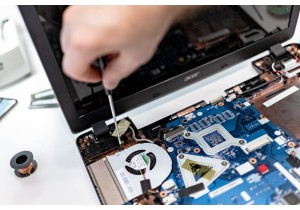In the fast-paced realm of electronic components, the relentless march of technological progress fuels a perpetual cycle of innovation and obsolescence. As new technologies emerge at a rapid pace, industry players face the complex challenge of managing product obsolescence while ensuring seamless transitions to newer technologies without disrupting existing systems. Understanding the root causes of these issues and implementing effective strategies to address them are crucial steps in navigating the evolving landscape of electronic components. Let's delve into the factors driving product technology obsolescence and explore actionable solutions for industry players.
The Causes of Electronic Components Product Technology Obsolescence:
1. Rapid Technological Advancements: IThe swift pace of technological innovation leads to the rapid introduction of newer, more advanced components, rendering existing products obsolete in a short span of time.
2. Component End-of-Life: Manufacturers frequently discontinue production of older components, leading to shortages, price hikes, or complete unavailability of essential parts for existing systems.
3. Compatibility Challenges:New technologies may not be fully compatible with legacy systems, creating integration hurdles and requiring costly upgrades or redesigns to maintain functionality.
4. Market Trends and Consumer Demand: Shifting market trends and changing consumer preferences drive the adoption of newer technologies, influencing the lifecycle of electronic components and products.
Strategies to Address Electronic Components Product Technology Obsolescence:
1. Lifecycle Management: Implement a robust lifecycle management strategy that includes regular monitoring of component status, forecasting obsolescence risks, and planning for product transitions.
2. Diversification of Suppliers: Cultivate relationships with multiple suppliers to mitigate risks associated with component shortages or end-of-life situations, ensuring a stable supply chain.
3. Design for Longevity:Prioritize designing products with modularity, scalability, and upgradeability in mind to facilitate easier transitions to newer technologies and extend product lifespan.
4. Obsolescence Mitigation Plans: Develop proactive obsolescence mitigation plans that outline strategies for sourcing alternative components, redesigning systems, or implementing technology refresh cycles.
5. Collaboration and Communication:Foster open communication channels with suppliers, customers, and industry partners to stay informed about emerging technologies, market trends, and potential obsolescence risks.
Embracing Change in the Electronic Components Industry
In a landscape defined by constant innovation and evolution, managing product technology obsolescence is a critical imperative for industry players seeking to thrive amidst change. By proactively addressing the root causes of obsolescence, implementing strategic measures to mitigate risks, and fostering adaptability and innovation, businesses can navigate the challenges posed by evolving technologies with resilience and agility.
As we embrace the transformative power of technology in the electronic components industry, a proactive approach to managing product obsolescence not only safeguards business continuity but also paves the way for continued growth, innovation, and success in an ever-changing technological landscape. By embracing change as a constant, industry players can steer their organizations towards a future where adaptability and innovation reign supreme in the realm of electronic components.

